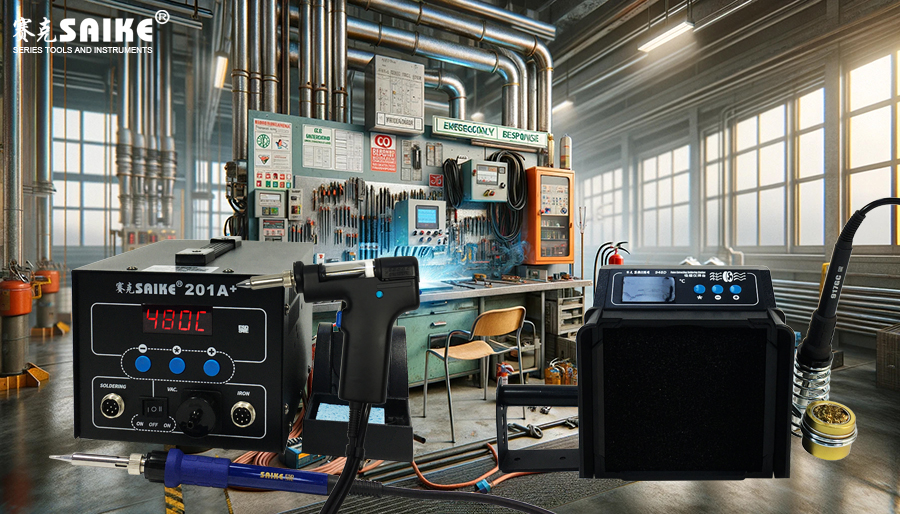
SK-YJ000HT-KP 100040
The safety issues in welding operations cannot be ignored, especially when it comes to fires and electric shock accidents involving the use of welding benches. These accidents not only have the potential to cause equipment damage but, more importantly, can result in casualties. Therefore, understanding how to prevent and respond to welding bench fires and electric shocks is crucial to improving welding safety. This article explores the response measures for welding bench fires and electric shock accidents, aiming to enhance emergency preparedness in the workplace and ensure the safety of staff.
I. Preventive Measures
1.Fire Prevention
– Equipment Maintenance: Regularly inspect the welding bench and related equipment to ensure that wires, plugs, and power sources are not damaged. Damaged wires and plugs are common causes of fires.
– Clean Working Environment: Keep the welding area clean and free from flammable materials such as grease, paper, and other flammable chemicals. Ensure there are no combustibles around during welding to avoid sparks igniting a fire.
– Proper Ventilation: Welding processes can produce flammable fumes and gases, so maintaining good ventilation is crucial. Using an exhaust system can reduce the potential risk of fire.
2.Electric Shock Prevention
– Insulation Protection: Ensure that all welding equipment and tools have good insulation to avoid exposed wires and circuits.
– Use of Grounding Devices: Using grounded welding equipment can significantly reduce the risk of electric shocks. Ensure that all equipment is properly grounded.
– Operational Education: Provide electrical safety training to operators, educating them on identifying electrical hazards and taking appropriate preventive measures.
II. Emergency Measures
1.Fire Response
– Initial Fire Handling: Ensure that the welding area is equipped with appropriate types of fire extinguishers, such as carbon dioxide or dry powder extinguishers, suitable for electrical fires.
– Emergency Evacuation: Develop and train employees on an emergency evacuation plan, ensuring that all staff knows how to safely evacuate in case of a fire.
– Emergency Contacts: Identify fire emergency contacts and phone numbers, including the local fire department, and ensure this information is accessible to all employees.
2.Electric Shock Accident Response
– Power Outage: Immediately cut off the power supply to the accident area in case of an electric shock accident. Ensure that every employee knows how to quickly and safely cut off the power.
– Rescue and First Aid: Educate employees on how to safely handle electric shock accidents, including how to isolate the victim from the power source using insulating materials. Provide basic first aid training, such as cardiopulmonary resuscitation (CPR), and ensure that first aid facilities are easily accessible.
– Medical Assistance: Seek professional medical help immediately after an electric shock accident, even if the victim appears to have no obvious injuries, as the consequences of electric shock may appear later.
III. Conclusion
Welding bench fires and electric shock accidents can be effectively avoided through a series of preventive measures, and prompt and effective emergency measures can minimize injuries in the event of an accident. By implementing these strategies, a safer work environment can be created, protecting the lives of staff and maintaining the integrity of production facilities. Every workplace should regularly assess its safety procedures to ensure compliance with the latest safety standards and regulatory requirements.


